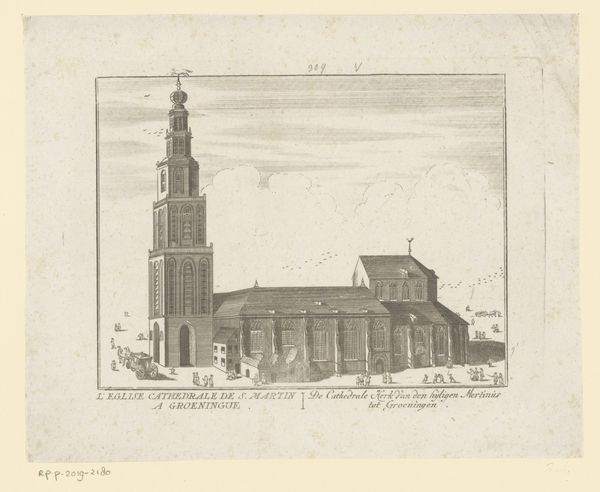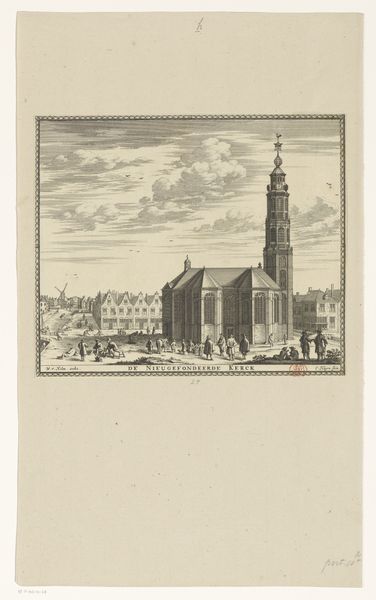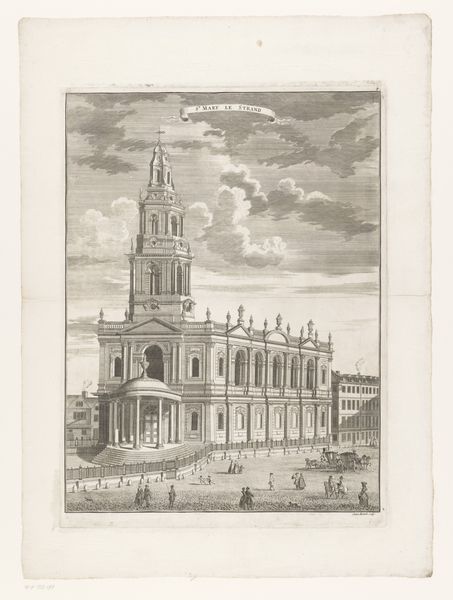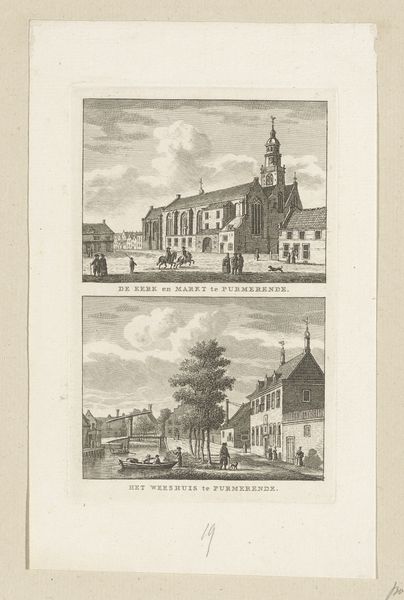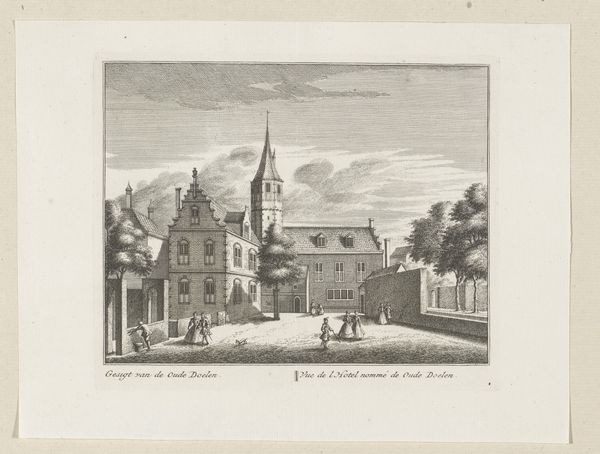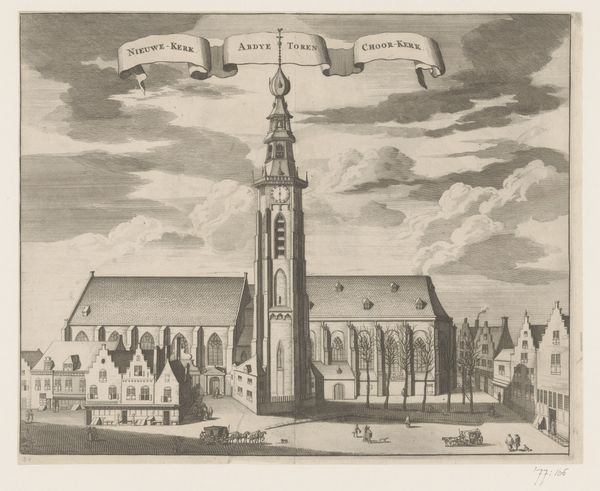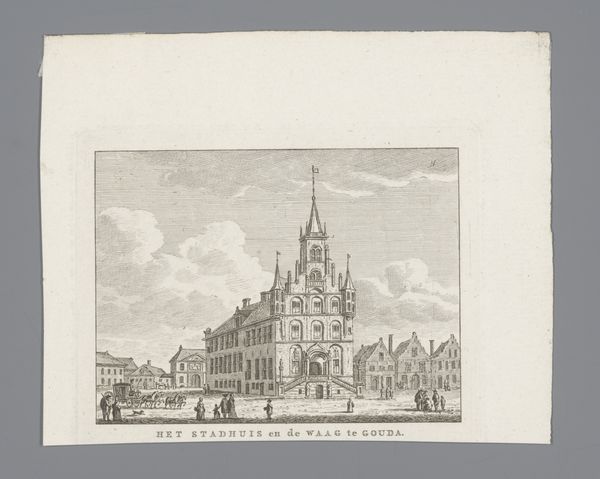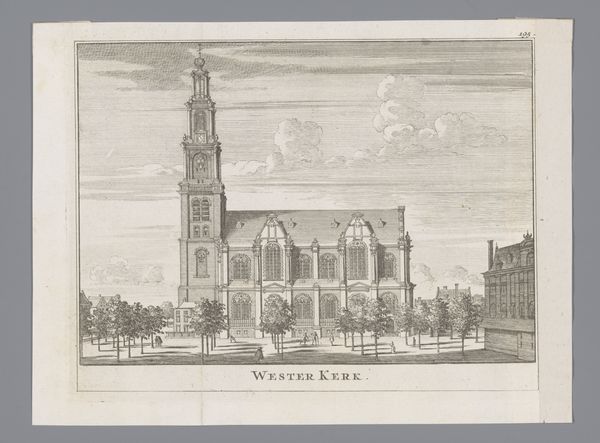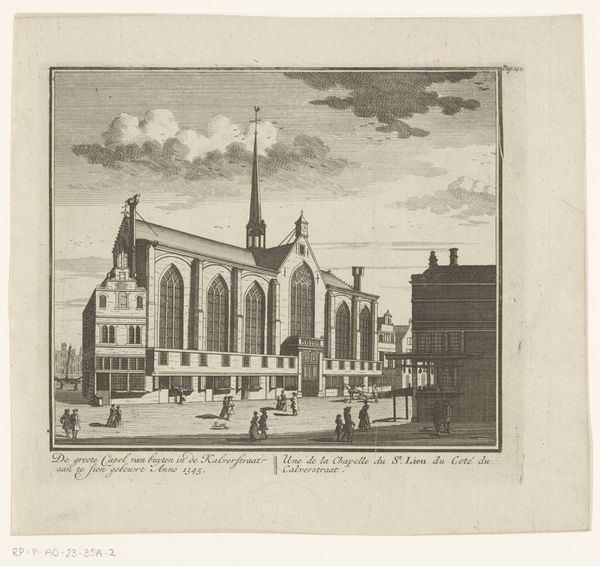
print, engraving, architecture
#
baroque
# print
#
cityscape
#
engraving
#
architecture
Dimensions: height 149 mm, width 200 mm
Copyright: Rijks Museum: Open Domain
Curator: This is "Gezicht op de Zuiderkerk te Amsterdam," or "View of the Zuiderkerk in Amsterdam," dating to 1751. It's an engraving. The artist, unfortunately, remains anonymous. Editor: Oh, it's so… precise. Makes me think of quiet city mornings, all angles and muted light. A bit severe, though. Almost feels like a blueprint instead of a lived-in place. Curator: The Zuiderkerk itself had a fascinating history. Consecrated in 1611, it was one of the first churches built specifically for Protestant worship in Amsterdam. This print captures it nearly 150 years later, within a very specific socio-political frame. Editor: Ah, that makes sense. Like they're documenting not just the building but the very idea of civic order. I mean, look at the way the light's handled – evenly, calmly, almost surgically. And that towering spire… It’s aspirational, definitely, but maybe a bit... cold. Curator: Amsterdam in the mid-18th century was a mercantile power, but also navigating internal political struggles between various factions. This image, perhaps, can be read as asserting a sense of Protestant order and civic stability during times of change. The focus on the church, a symbol of the city's spiritual and social fabric, could be a strategic statement. Editor: Absolutely. And the engraver’s decision to position the viewer at street level, that grounds the church in the everyday lives of Amsterdammers, whether they actually went inside the church or not. It really roots the divine in the decidedly… earthly, right? Curator: Precisely. This placement challenges a more hierarchical composition. Everyone occupies the same space in this little portrait of Amsterdam life, but let’s not forget who does *not* appear: Amsterdam's marginalized. Editor: Good point. A bustling but sanitized version of history… It reminds me of that sensation when an architect shows you a perfectly rendered image that exists before real human use muddies things up. Curator: Yes, perhaps offering viewers a glimpse into the ideals rather than the complex realities of 18th century Amsterdam society. Editor: It gives you a sense of the city, though, filtered, for sure, but tangible nevertheless. Okay, I am thinking about planning my trip now. Curator: Agreed. While acknowledging its possible limitations in representing all facets of the population, "Gezicht op de Zuiderkerk" provides us with important clues as we examine the construction of civic identity and power in the Dutch Golden Age.
Comments
No comments
Be the first to comment and join the conversation on the ultimate creative platform.

